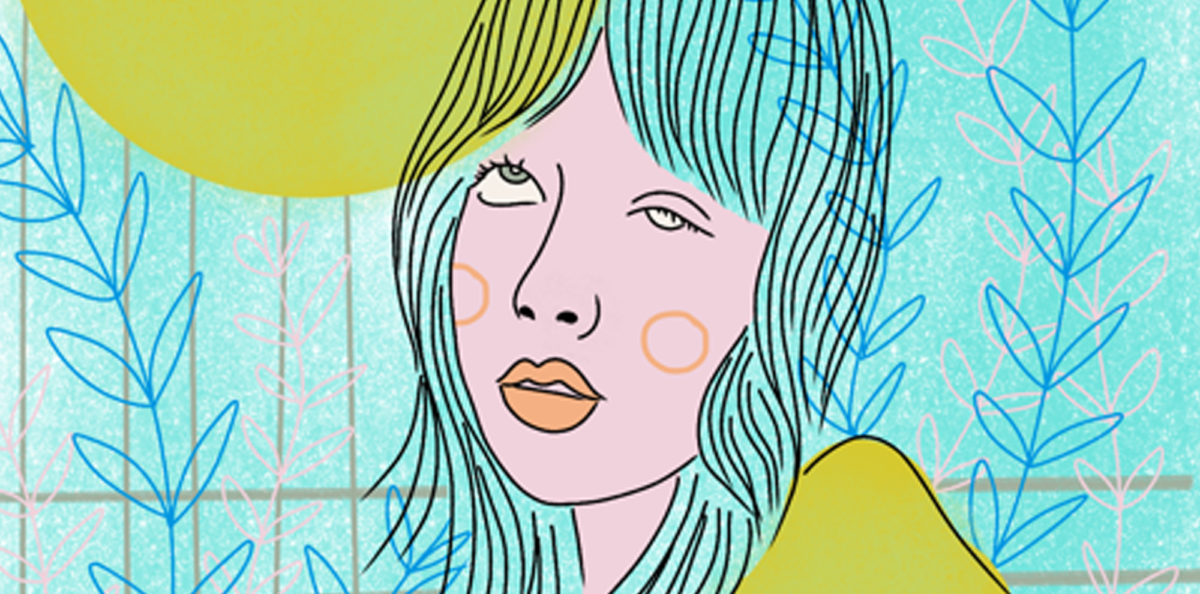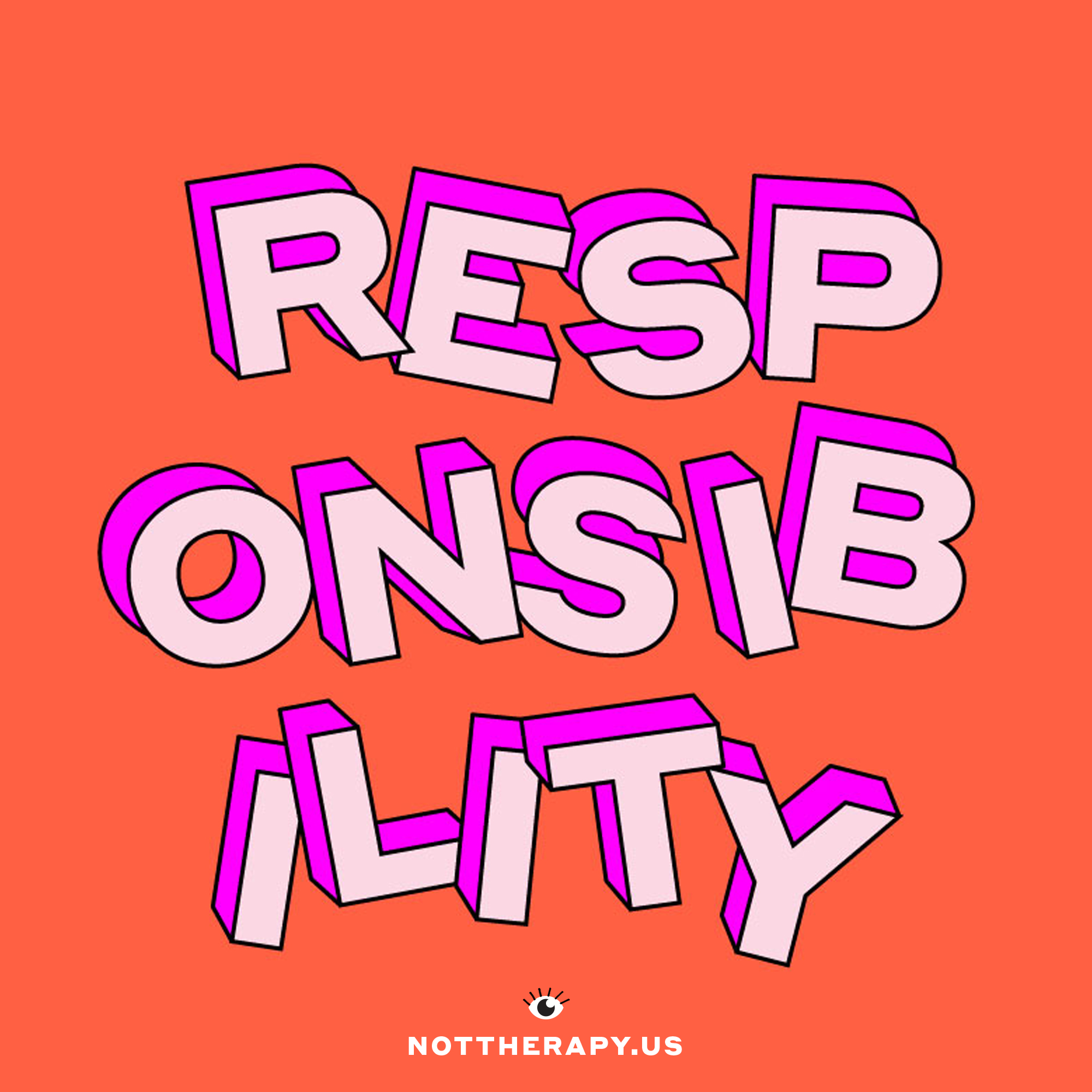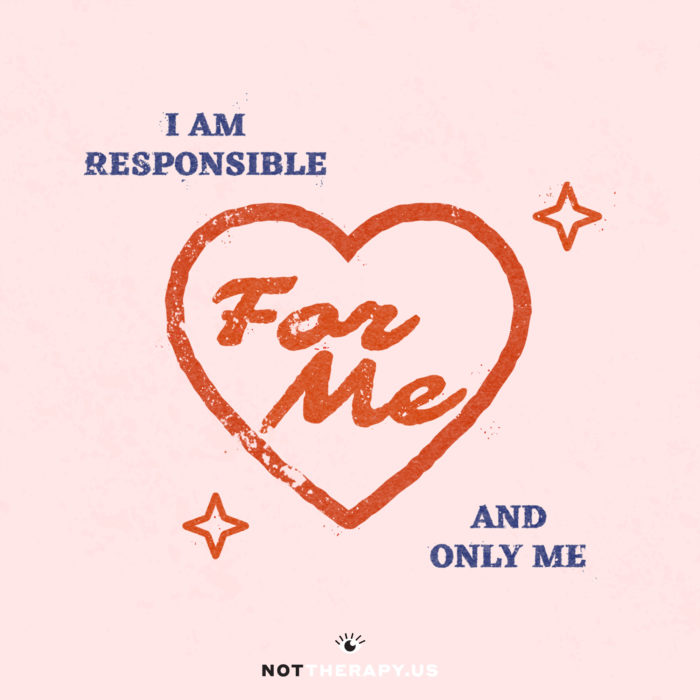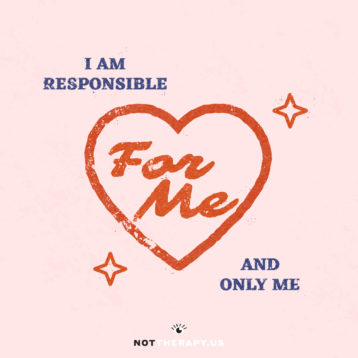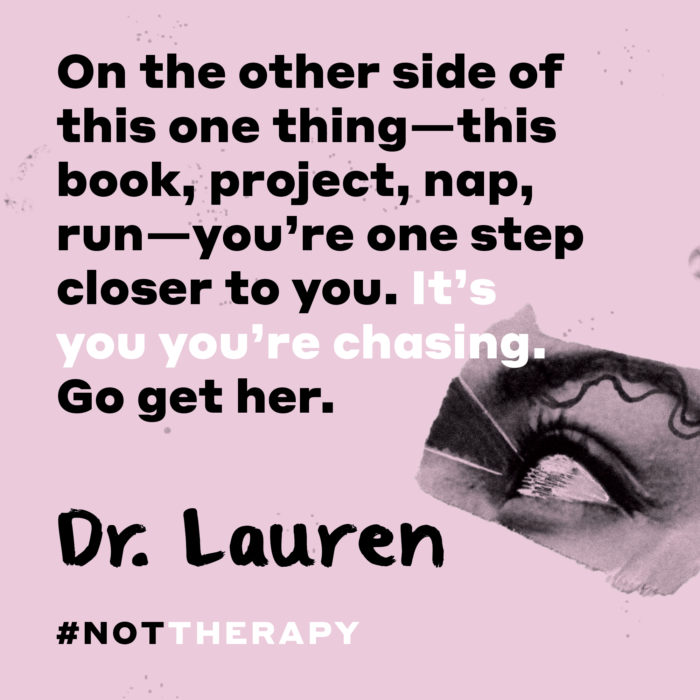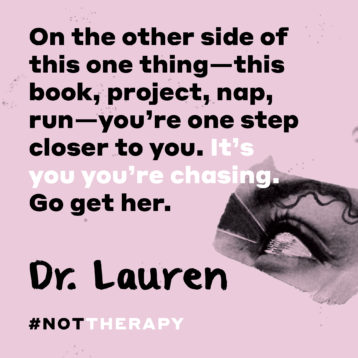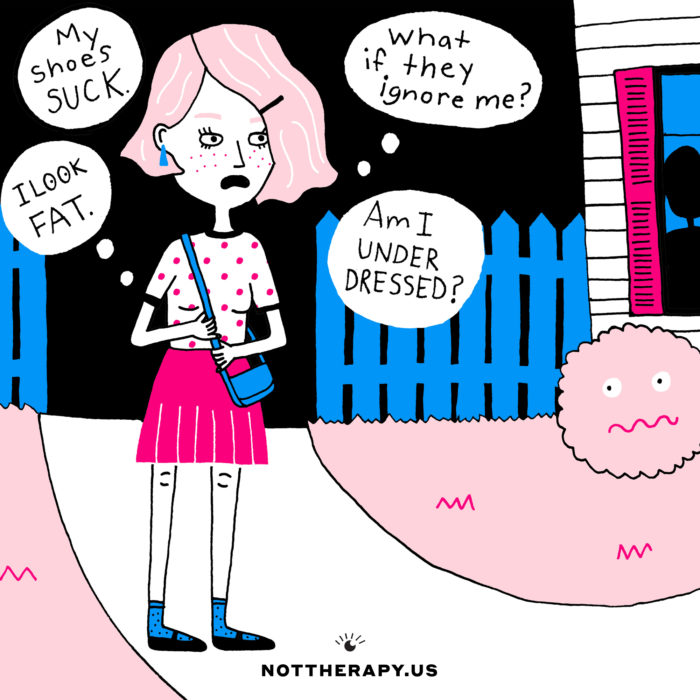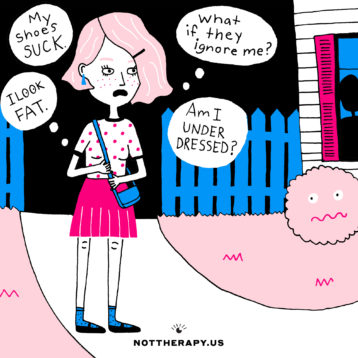We all experience all the feels: good moods, bad moods, so-so moods.
No one feels completely even all the time and thank God—how boring would that be?!
But, I hear you. Sometimes, the mood ebb and flow can be overwhelming. A mood rollercoaster isn’t the goal. Instead, it’d be nice for us all to experience mood fluctuation within reason. No highs that feel higher than high and then plummet to lows that make it hard to drag our asses out of bed.
The deal with your mood is that when it fluctuates, so do your activity levels, energy and the ability to complete daily tasks. When we have a hard time getting our to-do lists done, not only do we feel like garbage but the people closest to us start to nag. When that happens, our first instinct is to push them away and isolate. That, my dear, leads to a further decrease in mood and the vicious cycle ensues.
How do I know all of this? You’re super-special—but you’re not unique.
Many of us experience the same kinda thing. You’re not alone.
#TheFacts
Approximately 5.7 million Americans over the age of 18 have been diagnosed with Bipolar Disorder.
Bipolar Disorder, like every other mental health diagnosis, is on a continuum. What that means is that we, human beings, don’t experience things in buckets. Like, the Bipolar bucket versus the Non-Bipolar bucket. There is no meaningful difference between the diagnosed and the undiagnosed. It’s just that some of us meet the criteria to get the label and some of us don’t.
There are a couple different types of Bipolar disorder, Bipolar I and Bipolar II (I know, creative). Both are marked by experiencing aspects of mania or hypomania and depression, too. Hypomania is a lesser form of mania. See some of the symptoms of both mania and depression here.
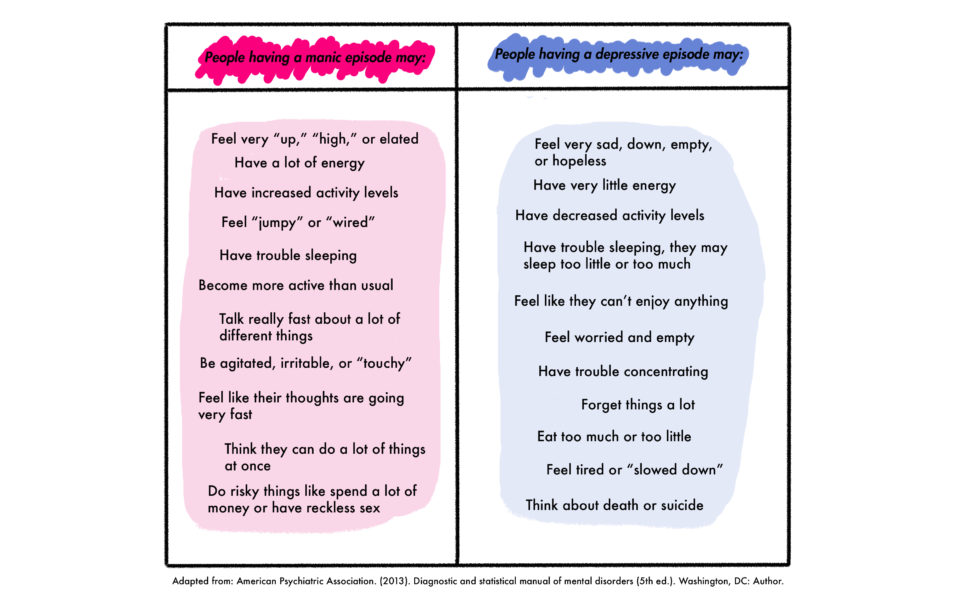
#InOtherWords
I’ve learned that one of the most important things to do when it comes to managing your mood is get familiar with exactly what it is that you’re dealing with.
Think about it, you don’t become the manager of a business without knowing exactly how the company works. Same goes for your mood. You can’t expect to be a stellar mood manager without knowing the in’s and out’s—the how’s, when’s, and why’s of your own individual emotional fluctuations.
And so, instead of judging yourself and getting wrapped up in the shame that comes from all that society says about mental health and other human conditions, use the calendar below and let’s begin to monitor your mood as you experience it.
#TheFeels
For those who haven’t experienced mania or hypomania symptoms, it would seem a welcome occurrence.
It’s not.
Elevated mood feels much more rammy than happy. Like, you don’t know whether to shit or wind your watch, and your internal motor is cruising at such a pace that you’d get distracted anyway. So, it doesn’t even matter.
Then, there’s the depression part.
Depression doesn’t always feel sad. For many, sad would be a gift, cause the emptiness that feels like nothing at all makes sad seem like a walk in the park.
Add to all of that a lack of energy, interest, and overall ugh and you get the point—it really is the worst.
But, luckily, it doesn’t have to end here.
#OnAPersonalNote
Here’s the deal: you are not your mood.
You are not your energy level.
But, you are your purpose.
It took me years to learn how not to define myself by my feelings. I went through a phase a little over a decade ago when I would read, read and read some more. No joke, I read 2-3 books a week. I read about people. Biographies of legendary folks. I wanted to know them, learn how they did it—life, themselves. The big takeaway from that decade of reading was that none of them was remembered or revered for how they felt but rather, for the impact they had on their communities, their families and the world. The people who make a difference here do things. And, fortunately or unfortunately, we never really learn how they felt doing it.
Why?
Because it’s secondary to who they are. How you feel is secondary to who you are, too.
That’s not to minimize your experience but instead, to maximize your frame of reference.
Getting familiar with your own mood pattern is the first step to accepting it, managing it and making it work for you rather than against you. It will be a part of your experience, yes. But, it will not define your days and yourself.
Here’s how…
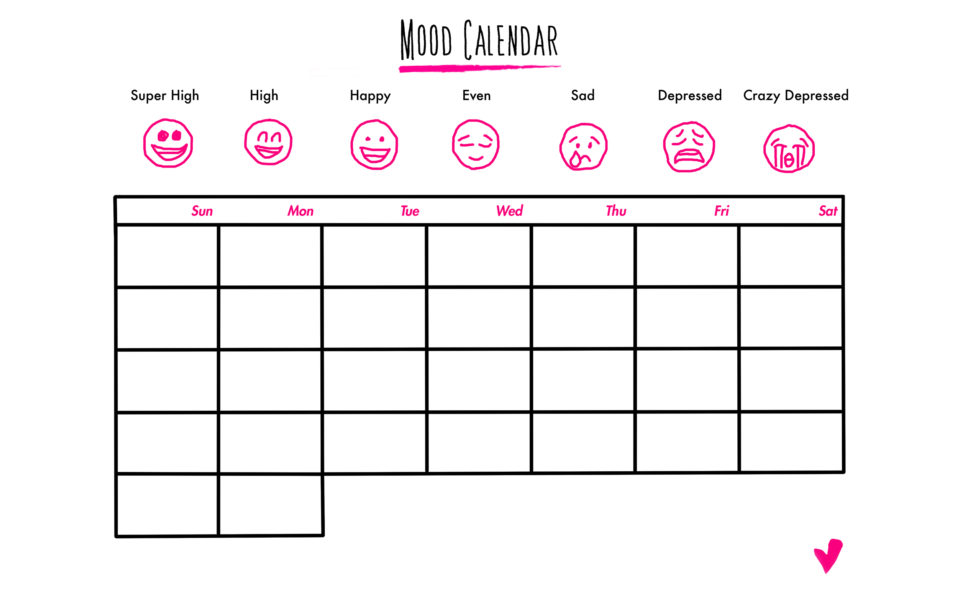
- Download and complete this mood calendar.
Starting today and for the next month, I want you to mark down your overall mood of the day, every evening. Use the given emojis to make it super-easy.
Some of us are two weeks up, one week down. Others can be one week up, two days down. It’s an individual experience.
Whether you’re diagnosed or not, your mood pattern matters to meet your goal.
- Get your lifestyle on track.
#DoThisThing and choose one idea each day to get your body working for you, rather than against you. With commitment and consistency, by this time next week, you’re going to be feeling more even. Just wait.
Illustration by Emmy Smith, mood calendar by Ben Shepard, charts adapted from the American Psychiatric Association.
